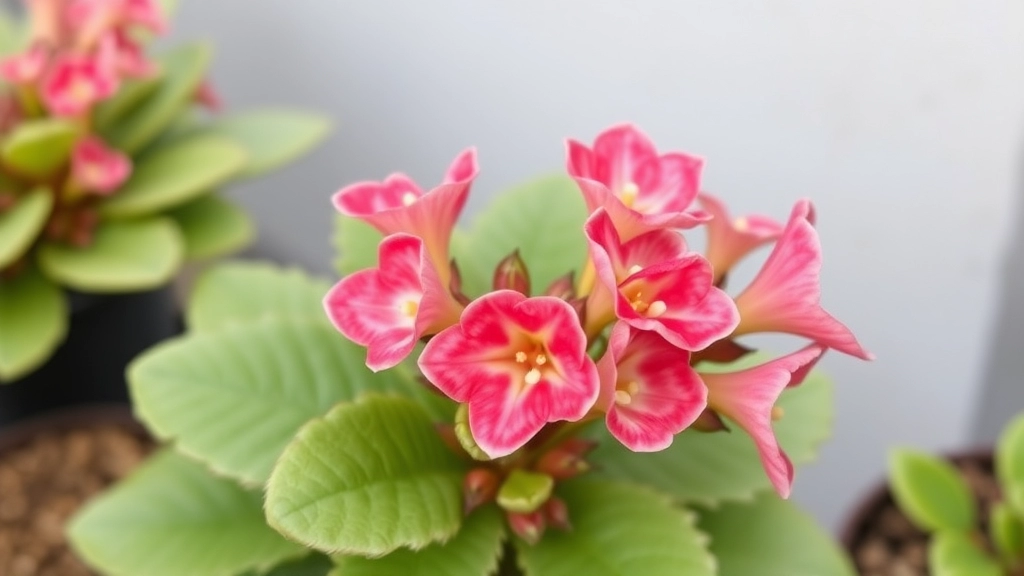Kalanchoe Gastonis Bonnieri Care
When it comes to Kalanchoe Gastonis Bonnieri care, the key is understanding its unique needs. Known as the Donkey Ear plant, this succulent thrives with the right balance of light, water, and soil. To ensure your plant flourishes, place it in a spot with bright, indirect sunlight and use well-draining soil to prevent root rot. Regular watering is essential, but be cautious not to overwater; let the soil dry out between waterings.
Temperature and Climate
Temperature and climate matter too. Kalanchoe Gastonis Bonnieri prefers warm environments and can suffer in cold weather. Protecting it from frost is crucial. Additionally, feeding the plant with a balanced fertilizer during its growing season will promote healthy growth.
Pest Management
Keep an eye out for common pests like aphids and mealybugs, and treat them promptly to keep your plant in top condition. With these care tips, your Donkey Ear plant will thrive and add a touch of greenery to your space.
Ideal Light Conditions for Kalanchoe Gastonis Bonnieri
Are you struggling to find the perfect light for your Kalanchoe Gastonis Bonnieri, commonly known as the Donkey Ear Plant?
This succulent thrives in bright, indirect sunlight, making it essential to position it correctly.
Best Soil Mix for Kalanchoe Gastonis Bonnieri
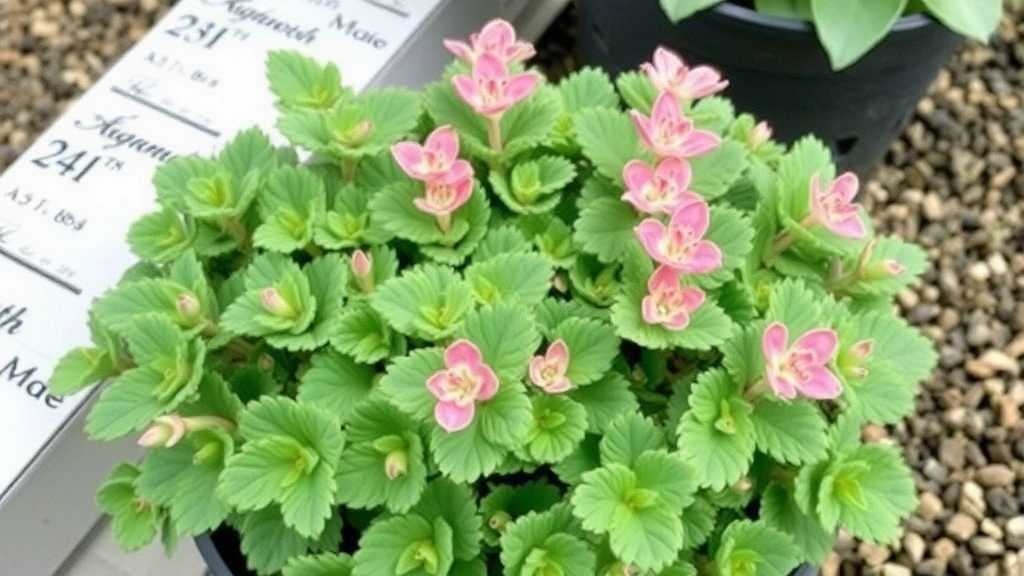
So, you’ve got your Kalanchoe Gastonis Bonnieri, also known as the Donkey Ear Plant, and you’re wondering what kind of soil it needs to thrive.
Choosing the right soil mix is crucial for your plant’s health.
Why Soil Matters
The right soil helps with drainage, moisture retention, and nutrient availability.
If you’re using regular potting soil, it might retain too much moisture, which can lead to root rot.
Ideal Soil Mix
Here’s what I recommend for an ideal soil mix:
- Cactus Mix: Start with a pre-made cactus or succulent soil mix. These are designed to drain well.
- Add Perlite or Pumice: Mix in about 30% perlite or pumice to improve drainage. This keeps the roots from sitting in water.
- Organic Matter: A touch of organic matter, like compost, can provide essential nutrients without making the soil too heavy.
- pH Level: Aim for a slightly acidic to neutral pH, around 6.0 to 7.0.
Quick Tips for Mixing Your Soil
- Ratio: A good mix could be 50% cactus mix, 30% perlite, and 20% compost.
- Container: Always ensure your pot has drainage holes to prevent water from pooling.
- Check Moisture: Before watering, stick your finger in the soil. If it feels dry an inch down, it’s time to water.
Watering Techniques for Donkey Ear Plant
When it comes to caring for your Kalanchoe Gastonis Bonnieri, or Donkey Ear Plant, watering is crucial. Many plant owners worry about overwatering or underwatering, both of which can lead to stress for your plant.
Understanding Water Needs
The Donkey Ear Plant thrives in a well-draining environment. Here are some essential watering techniques to keep your plant healthy:
- Check the Soil Moisture: Before watering, stick your finger about an inch into the soil. If it feels dry, it’s time to water. If it’s still moist, wait a few more days.
- Water Deeply: When you do water, ensure that you saturate the soil thoroughly. This encourages deep root growth.
- Frequency: In warmer months, you may need to water every 1-2 weeks. In winter, reduce this to every 2-3 weeks, as the plant enters a dormant phase.
- Use Room Temperature Water: Cold water can shock the roots. Room temperature water is more gentle and will help maintain a stable environment.
- Drainage: Always ensure your pot has drainage holes. Standing water can lead to root rot, a common issue for Kalanchoe plants.
Signs of Overwatering
Be vigilant for signs that you may be overwatering:
- Yellowing leaves
- Wilting despite wet soil
- Foul odours from the soil
If you notice these symptoms, reduce your watering frequency immediately. For more detailed tips on maintaining healthy Kalanchoe plants, check out our Kalanchoe Paddle Plant Care Guide and our comprehensive guide on Kalanchoe Leaf Problems.
Temperature and Climate Requirements for Kalanchoe Gastonis Bonnieri
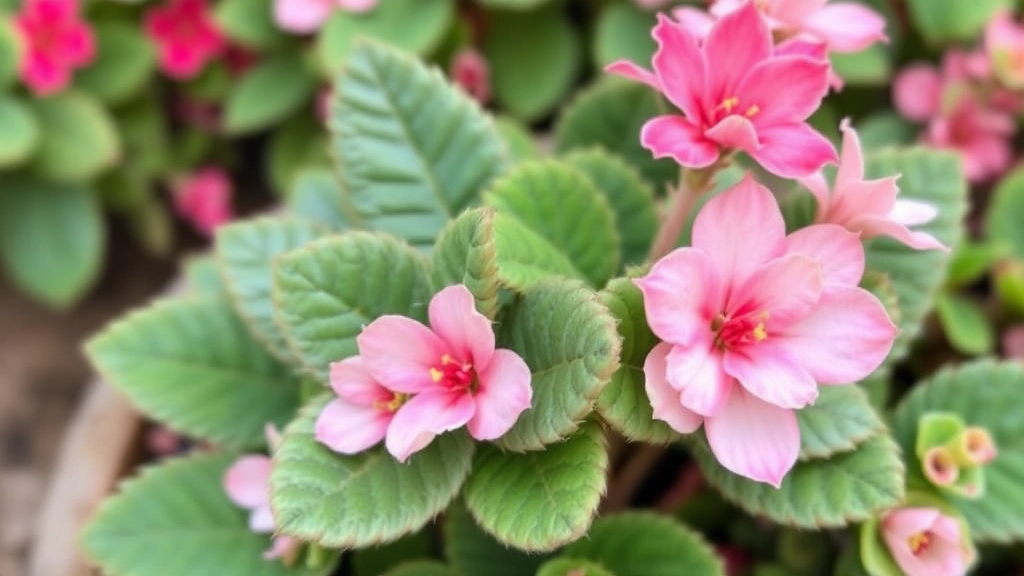
Are you worried about whether your Kalanchoe Gastonis Bonnieri, commonly known as the Donkey Ear Plant, can thrive in your climate?
Understanding the temperature and climate needs of this unique succulent is essential for its healthy growth.
Ideal Temperature Range
Kalanchoe Gastonis Bonnieri prefers a warm environment.
- Daytime Temperature: Aim for 20°C to 25°C (68°F to 77°F).
- Nighttime Temperature: It can tolerate cooler temperatures, ideally around 10°C to 15°C (50°F to 59°F).
It’s crucial to avoid sudden temperature drops or prolonged exposure to cold drafts, as this can stress the plant.
Climate Considerations
This succulent thrives in a dry climate, resembling its native habitat.
- Humidity Levels: Keep humidity low, ideally below 50%. High humidity can lead to fungal issues.
- Sunlight Exposure: Ensure it receives bright, indirect sunlight. Direct sunlight can scorch the leaves.
Seasonal Changes
As the seasons change, so do the needs of your Donkey Ear Plant.
- Spring and Summer: These are the ideal growing seasons. Ensure your plant is in a warm spot with plenty of light.
- Autumn and Winter: Reduce watering as the plant enters dormancy. Keep it in a slightly warmer area to prevent cold stress.
When it comes to nurturing your Kalanchoe Gastonis Bonnieri, understanding its fertilizer needs is essential for promoting vibrant growth. Many plant enthusiasts often wonder: how often should I feed my Donkey Ear Plant?
### Fertilizer Type
– **Balanced Liquid Fertilizer**: Use a balanced, water-soluble fertilizer, ideally with an NPK ratio of 10-10-10 or 20-20-20.
– **Cactus Mix**: Alternatively, a cactus-specific fertilizer can also work wonders, given its similar needs.
### Feeding Schedule
– **Growing Season**: During the spring and summer months, feed your Kalanchoe every 4-6 weeks.
– **Dormant Period**: In autumn and winter, reduce feeding frequency to once every 8-10 weeks, as the plant’s growth slows down.
### Application Tips
– **Dilution**: Always dilute the fertilizer to half strength to avoid burning the roots.
– **Watering First**: Water the plant before applying fertilizer to ensure nutrients are absorbed effectively.
For more information on how to ensure your Kalanchoe thrives, check out our [essential care tips for summer success](https://planthq.org/essential-kalanchoe-care-tips-for-summer-success/) and learn [how to grow Kalanchoe with essential care tips and tricks](https://planthq.org/how-to-grow-kalanchoe-essential-care-tips-and-tricks/).
Common Pests and How to Manage Them
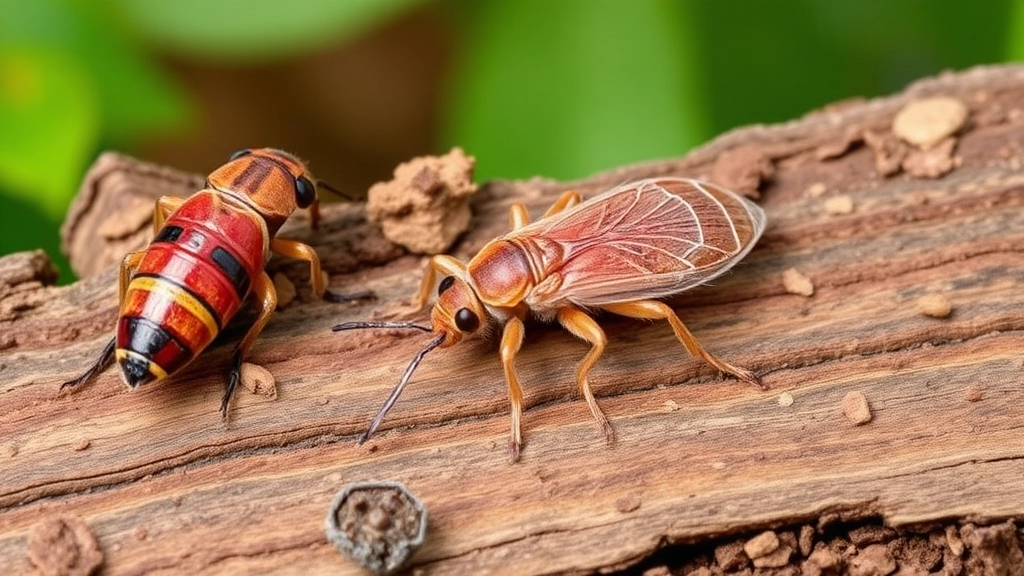
So, you’ve got your Kalanchoe Gastonis Bonnieri thriving, but now you’re worried about pests? You’re not alone! Many plant lovers face the same battle. Let’s dive into the common pests that can invade your beloved Donkey Ear Plant and how to kick them to the curb.
Common Pests
- Mealybugs
These little white fluff balls love to hide in the leaf joints.
They can suck the sap out of your plant, leading to stunted growth. - Aphids
Tiny green or black bugs that gather on new growth.
They can cause curling leaves and transmit diseases. - Spider Mites
Look for fine webbing on the underside of leaves.
They thrive in dry conditions and can quickly multiply. - Scale Insects
They appear as small brown bumps on the stems and leaves.
They can weaken your plant by feeding on its sap.
Managing Pests
- Regular Inspections
Keep an eye on your plant. A quick check every week can help catch infestations early. - Natural Predators
Introduce ladybugs or lacewings to your garden. They love munching on aphids and mealybugs. - Neem Oil
Mix neem oil with water and spray it on affected areas. It disrupts the pests’ life cycle without harming your plant. - Insecticidal Soap
This is a safe option for treating infestations. Just spray it directly on the pests. - Isolation
If you notice an infestation, isolate the affected plant to prevent it from spreading to your other greens. - Cleaning
Wipe down leaves with a damp cloth to remove dust and potential pests. This also helps your plant breathe better.
By staying vigilant and using these simple strategies, you can keep your Kalanchoe Gastonis Bonnieri healthy and pest-free.
Preventing and Treating Root Rot and Mildew
As we delve deeper into the care of Kalanchoe Gastonis Bonnieri, it’s crucial to address the potential threats of root rot and mildew. These issues can undermine the health of your Donkey Ear plant, leading to significant stress and decline.
Understanding Root Rot
Root rot is often the result of overwatering or poor drainage. This condition causes the roots to become mushy and dark, ultimately hindering the plant’s ability to absorb nutrients.
Prevention Tips:
- Well-Draining Soil: Use a soil mix designed for succulents. This ensures excess water drains away quickly.
- Pot Selection: Choose pots with drainage holes to allow moisture to escape.
- Watering Schedule: Allow the top inch of soil to dry out before watering again. This helps prevent over-saturation.
Tackling Root Rot
If you suspect your Kalanchoe is suffering from root rot, swift action is essential.
Steps to Treat Root Rot:
- Remove the Plant: Gently take the plant out of its pot.
- Inspect the Roots: Look for any dark, mushy roots. Healthy roots should be firm and white.
- Prune Damaged Roots: Cut away any affected roots with sterile scissors.
- Repot: Place the plant in fresh, dry soil and a clean pot.
Understanding Mildew
Mildew, often seen as a white or greyish powder on leaves, can occur in humid conditions. This fungal issue can lead to leaf drop and overall decline.
Prevention Tips:
- Air Circulation: Ensure your plant has good airflow around it. Avoid overcrowding.
- Humidity Control: Keep humidity levels moderate. If your home is too humid, consider using a dehumidifier.
- Watering Techniques: Water at the base of the plant rather than from above to keep leaves dry.
Treating Mildew
If mildew appears, it’s essential to act quickly to prevent further spread.
Pruning and Maintaining Healthy Growth
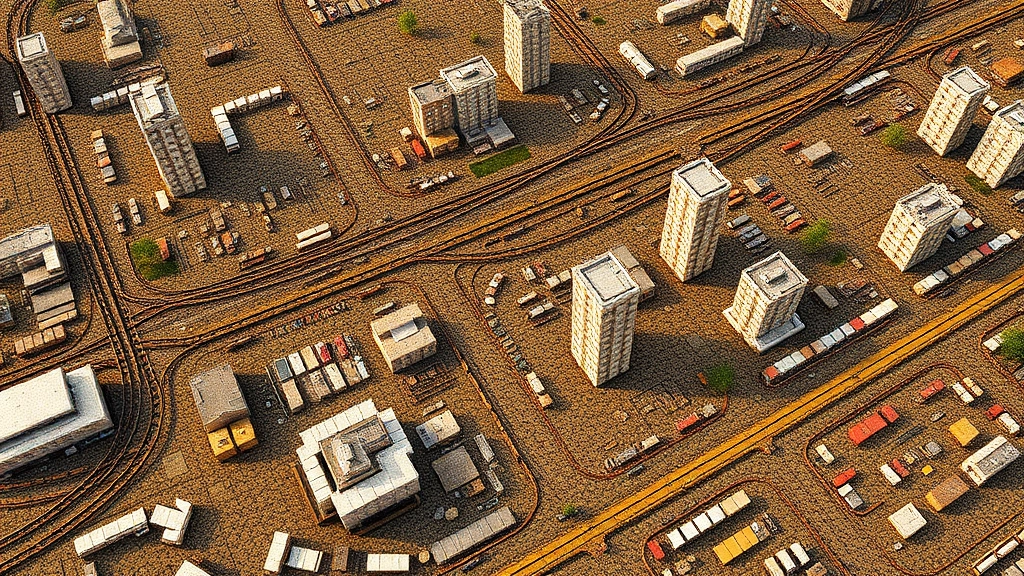
So, you’ve got your Kalanchoe Gastonis Bonnieri thriving, but are you giving it the care it truly deserves?
Pruning is a game changer for keeping your Donkey Ear Plant looking its best.
Why Prune?
- Encourages Growth: Snipping off dead or wilted leaves lets the plant focus its energy on new growth.
- Shape and Size Control: It helps maintain a tidy shape and prevents it from getting leggy.
- Healthier Plants: Removing any diseased or damaged parts keeps your plant healthy.
When to Prune:
- Spring and Early Summer: This is when your plant is actively growing, making it the perfect time for a trim.
How to Prune:
- Use Clean Tools: Always start with clean, sharp scissors or pruning shears to avoid introducing any pests or diseases.
- Identify What to Cut: Look for yellowing leaves, spent flowers, or any stems that look weak.
- Cut at the Base: Trim leaves and stems close to the base to encourage new growth.
- Don’t Overdo It: A little goes a long way. Aim to remove about 10-20% of the plant at a time.
Maintaining Healthy Growth:
- Regular Checks: Make it a habit to check your plant weekly. Look for any signs of stress or damage.
- Rotate Your Plant: Give it a gentle twist every few weeks to ensure even light exposure, promoting balanced growth.
- Dust Off Leaves: Wipe down the leaves with a damp cloth to keep them clean and help with photosynthesis.
Tips for Propagating Kalanchoe Gastonis Bonnieri
Many plant enthusiasts wonder how to propagate their Kalanchoe Gastonis Bonnieri, also known as the Donkey Ear Plant.
Propagating this succulent is not only rewarding but also a great way to expand your collection or share with friends. Here are some straightforward tips to ensure successful propagation:
Selecting the Right Pot for Kalanchoe
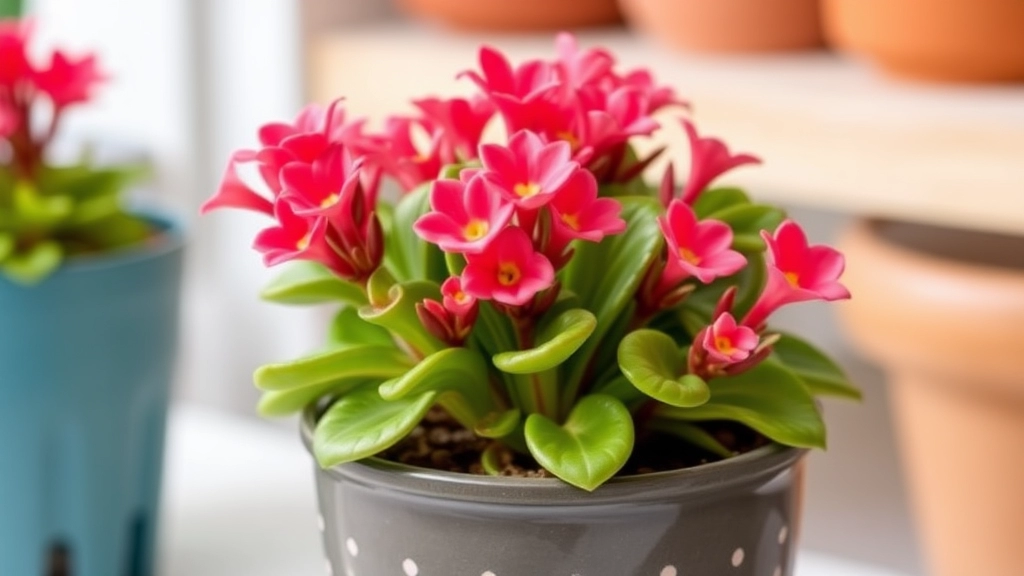
So, you’ve got your Kalanchoe Gastonis Bonnieri, and now you’re wondering about the perfect pot to give it a happy home.
Choosing the right pot isn’t just about aesthetics; it’s crucial for your plant’s health.
Here’s what to consider:
- Drainage is Key: Look for pots with drainage holes. Kalanchoes hate sitting in soggy soil, and good drainage helps prevent root rot.
- Size Matters: A pot that’s too big can hold too much moisture, while one that’s too small can restrict growth. Aim for a pot that’s about 2-3 inches larger in diameter than the current one.
- Material Choices: Terracotta pots are fantastic because they’re breathable and help wick away excess moisture. Plastic pots are lighter and retain moisture longer, but make sure they have drainage!
- Weight Considerations: If you plan to move your plant around, consider a lighter pot. It’ll save your back when you’re rearranging things.
- Style Points: Choose a pot that complements your decor. After all, a beautiful pot can really elevate the look of your Kalanchoe.
Selecting the right pot not only enhances the visual appeal but also supports the overall health of your plant.
Preparing for Winter Care and Cold Weather Protection
As the colder months approach, many plant enthusiasts worry about how to protect their beloved Kalanchoe Gastonis Bonnieri, commonly known as the Donkey Ear Plant.
Understanding Winter Needs
Kalanchoes are native to warmer climates, making them sensitive to cold temperatures. Here’s how to ensure your plant thrives during winter:
- Indoor Relocation: If your Kalanchoe is outdoors, consider moving it indoors. A bright, south-facing window is ideal.
- Temperature Control: Maintain indoor temperatures between 15°C to 21°C. Avoid placing the plant near drafts or heating vents.
- Humidity Management: Kalanchoes prefer low humidity. Ensure that your indoor environment is dry, as excessive moisture can lead to mildew.
Protecting from Frost
If you live in an area prone to frost, take these precautions:
- Covering: Use horticultural fleece or blankets to cover outdoor plants during cold nights.
- Mulching: Apply a layer of mulch around the base if your Kalanchoe is in the ground. This insulates the roots.
- Pot Choice: If your Kalanchoe is in a pot, consider insulating the pot with bubble wrap or placing it on a wooden surface to prevent cold from seeping through.
Watering Adjustments
During winter, your Kalanchoe will require less water.
- Reduce Frequency: Water only when the top inch of soil feels dry. Overwatering can lead to root rot.
- Check Soil Moisture: Use your finger to gauge moisture levels rather than adhering to a strict schedule.
Final Touches
As winter approaches, ensure your Kalanchoe is well-prepared.
- Inspect for Pests: Check for any pests that may have taken refuge. Treat promptly to avoid infestations.
- Fertilizer Pause: Refrain from fertilizing during the winter months, as the plant will be in a dormant state.
For more detailed guidance on keeping your Kalanchoe healthy, check out our essential Kalanchoe care tips for summer success and bloom season tips for year-round flowers.
Signs of Stress and How to Revive Your Donkey Ear Plant
So, you’ve noticed your Kalanchoe Gastonis Bonnieri, or Donkey Ear Plant, isn’t looking its best.
What gives?
Stress signals can pop up in various ways.
Here’s what to look for and how to bring your plant back to life.
Common Signs of Stress
- Droopy Leaves: If the leaves are sagging, it might be thirsty or overwatered.
- Brown Edges: This often indicates a lack of moisture or too much direct sunlight.
- Yellowing Leaves: A sign of overwatering or nutrient deficiency.
- Stunted Growth: If your plant seems to have hit a growth plateau, it might need repotting or more nutrients.
- Pests: Check for any little critters hiding out. They can stress your plant big time.
Reviving Your Donkey Ear Plant
Now, let’s tackle how to get your Kalanchoe back on track.
- Adjust Watering:
- If it’s droopy, give it a good drink.
- If it’s soggy, let the soil dry out before watering again.
- Check Light Conditions:
- Move it to a spot with bright, indirect light if it’s getting scorched.
- Repot If Needed:
- If it’s root-bound, switch to a bigger pot with fresh soil.
- Treat for Pests:
- Use insecticidal soap or neem oil to manage any infestations.
- Fertilize:
- A balanced, diluted fertiliser can perk it up if it’s lacking nutrients.
Keeping an Eye on Your Plant
Regularly check in on your Donkey Ear Plant.
Look for changes and adjust care as needed.
This way, you can catch stress signs early and keep your plant thriving.
For more detailed care instructions, you can refer to our Donkey Ear Kalanchoe Care Guide. Additionally, if you’re dealing with pests, our guide on treating and preventing Kalanchoe white bugs might be helpful.
FAQs on Kalanchoe Gastonis Bonnieri Care
What type of soil mix is best for Kalanchoe Gastonis Bonnieri?
The ideal soil mix for Kalanchoe Gastonis Bonnieri includes a pre-made cactus or succulent soil mix, about 30% perlite or pumice for improved drainage, a touch of organic matter like compost for essential nutrients, and a slightly acidic to neutral pH (around 6.0 to 7.0).
How should I mix the soil for my Kalanchoe Gastonis Bonnieri?
A good mix could be 50% cactus mix, 30% perlite, and 20% compost. Ensure your pot has drainage holes and check the soil moisture before watering.
What temperature range is ideal for Kalanchoe Gastonis Bonnieri?
Kalanchoe Gastonis Bonnieri prefers daytime temperatures between 20°C to 25°C (68°F to 77°F) and nighttime temperatures around 10°C to 15°C (50°F to 59°F). Avoid sudden temperature drops and cold drafts.
What climate conditions does Kalanchoe Gastonis Bonnieri thrive in?
This succulent thrives in a dry climate with low humidity levels (below 50%) and bright, indirect sunlight. High humidity can lead to fungal issues, and direct sunlight can scorch the leaves.
What are the common pests that affect Kalanchoe Gastonis Bonnieri?
Common pests include mealybugs, aphids, spider mites, and scale insects. Regular inspections, natural predators, neem oil, insecticidal soap, isolation, and cleaning can help manage these pests.
How can I manage pests on my Kalanchoe Gastonis Bonnieri?
Regularly inspect your plant, introduce natural predators like ladybugs, use neem oil or insecticidal soap, isolate infested plants, and clean the leaves with a damp cloth to keep pests at bay.
Why is pruning important for Kalanchoe Gastonis Bonnieri?
Pruning encourages new growth, helps maintain a tidy shape, and keeps the plant healthy by removing dead or diseased parts. It’s best to prune during spring and early summer.
How should I prune my Kalanchoe Gastonis Bonnieri?
Use clean, sharp tools, identify what to cut (yellowing leaves, spent flowers, weak stems), and trim close to the base. Aim to remove about 10-20% of the plant at a time.
What type of pot is best for Kalanchoe Gastonis Bonnieri?
Choose a pot with drainage holes to prevent root rot. Terracotta pots are breathable and help wick away excess moisture, while plastic pots retain moisture longer. The pot should be about 2-3 inches larger in diameter than the current one.
How can I maintain healthy growth for my Kalanchoe Gastonis Bonnieri?
Regularly check your plant for signs of stress or damage, rotate it for even light exposure, and wipe down the leaves to keep them clean and aid in photosynthesis.
References
-
Growing Kalanchoe Gastonis Bonnieri: Tips and Tricks
-
Kalanchoe Gastonis Bonnieri Care Guide
-
How to Care for Kalanchoe Gastonis Bonnieri
